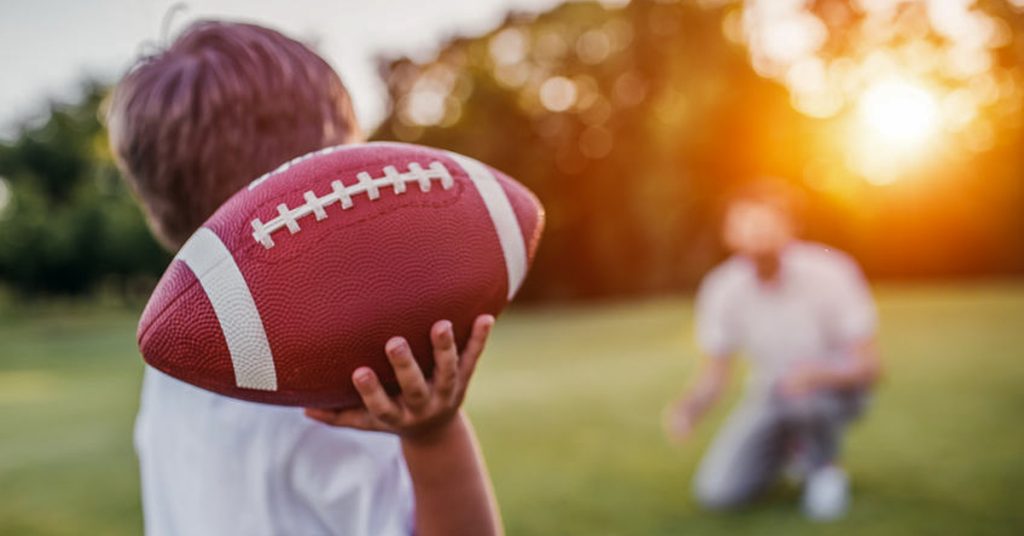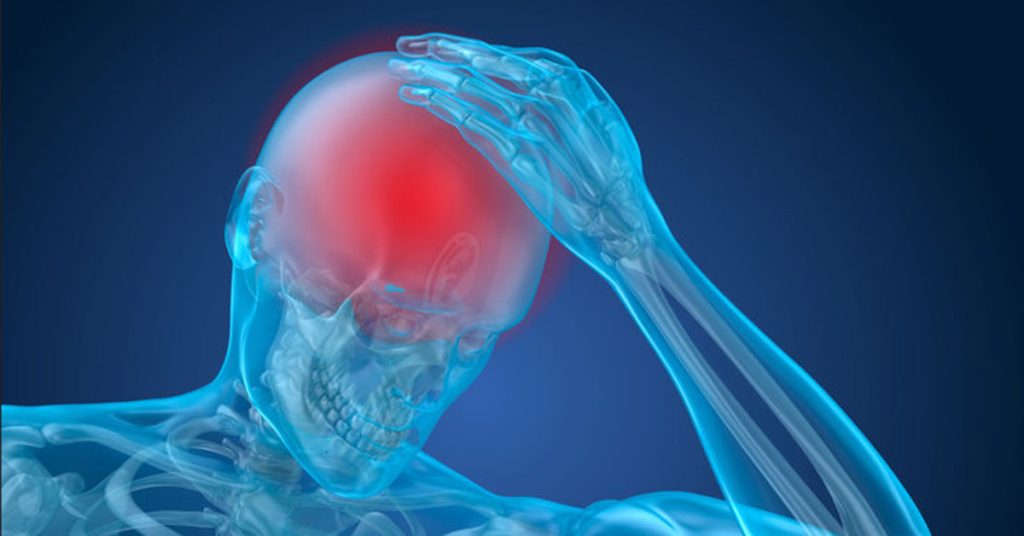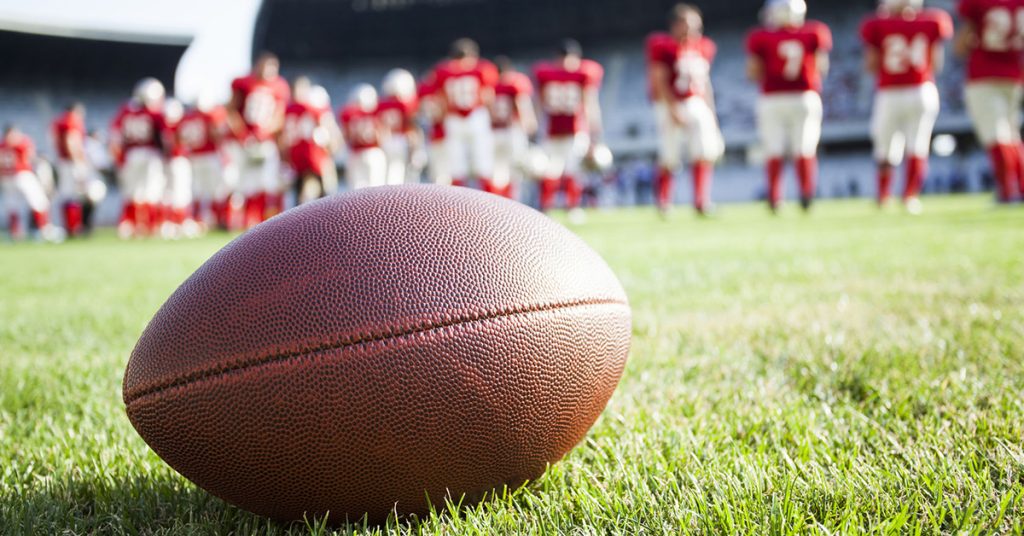Posts Tagged ‘“Boston brain injury lawyers”’
Fewer Children Visiting Hospitals for Sports-Related TBI
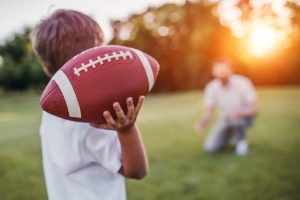
There has been a drop in child sports-related TBI visits to ERs, according to the CDC.
According to new research, fewer children are visiting the hospital for sports and recreation-related traumatic brain injuries. This is being largely driven by changes on the football field.
After a decade of rising injuries and the passage of state concussion laws, fewer children have been participating in youth football, contributing to the reduction in injuries. Going forward, the researchers are focusing on studying safer play techniques which could limit contact in football. They will also continue investigating head injuries in other sports, such as soccer and basketball, where the numbers didn’t change significantly.
The Centers for Disease Control and Prevention (CDC) released the research in a recent weekly report. Researchers analyzed data from the National Electronic Injury Surveillance System-All Injury Database.
What the Researchers Learned
The number of children visiting the hospital for sports and recreation-related traumatic brain injuries fell 32 percent from 2013 to 2018.
Researchers attribute this to changes in youth football programs across the U.S. Since 2010, participation has fallen 24 percent. Meanwhile, there was a 39 percent decline in football TBI visits from 2013 and 2018.
This was an encouraging sign. Previously, from 2001 to 2013, there had been a 200 percent increase in children suffering football-related traumatic brain injuries and ER visits. This was among children age 5-17.
While football-related TBI ER visits decreased, there was not significant movement in TBI ER visits for basketball and soccer, two other contact sports.
The CDC and researchers are also studying safer tackling techniques in football. Several sports leagues have also introduced new approaches which limit contact during practice. These include the National Federation of State High School Associations and its member states, along with two major youth football programs.
Concussions and Traumatic Brain Injuries
According to the CDC, a TBI is caused by a bump, blow or jolt to the head. It may be a penetrating head injury that disrupts the brain function. A concussion is a “mild” traumatic brain injury. A concussion may lead to brief changes in mental function and consciousness. Those injured may not realize they have a concussion and learning to recognize potential symptoms can save their life.
When it comes to your child, physicians, pediatricians, schools and caregivers have a responsibility to follow certain steps if they play sports and suffer a concussion or repeated concussions.
Massachusetts Concussion Protocols: Preventing Injuries and Caring for Students
CDC researchers noted that many children can recover from a sports and recreation-related TBI within 4 weeks. However, there is a continued focus on reducing long-term effects on a child’s brain development. Recovery must be carefully monitored.
Massachusetts and other states have passed laws to guide schools and sports leagues on how to prevent and treat injuries. Schools, leagues and coaches have a responsibility to follow the concussion protocols.
In Massachusetts, schools must provide students with training on how to recognize a concussion. Students must be removed from play if a concussion is suspected. They can only return with a doctor’s note. Read more about the Massachusetts concussion protocol on our website.
About Breakstone, White & Gluck – Boston Concussion Lawyers
Breakstone, White & Gluck and our Boston head injury lawyers represent clients after traumatic brain injuries and concussions caused by negligence. If you or a loved one has been injured, receive medical attention right away. Then, learn your legal rights.
For a free consultation with one of our lawyers, call 800-379-1244 or 617-723-7676. You can also use our contact form.
March is Brain Injury Awareness Month

March is Brain Injury Awareness Month. Take the opportunity to learn
Today, there is greater awareness around brain injuries. As a result, many people are treating brain injuries earlier and living healthier lives.
The Centers for Disease Control and Prevention (CDC) observes Brain Injury Awareness Month in March, to provide education about potential concussion symptoms, ongoing research and the needs of those living with a brain injury. This comes at the right time for families, as many children and teenagers plan to participate in spring sports.
Many brain injuries are caused by car accidents, falls or violence. But over the past decade, we have learned more about young children and student athletes suffering concussions on the sports field. In fact, from 2010 to 2016, nearly two million children were treated in emergency rooms for sports-related traumatic brain injuries (TBI), according to the CDC website. Sports associated with the highest number of ER visits: football, cycling, basketball, playground activities and soccer.
Among males 17 and younger, football was involved in 27 percent of all sports-related TBI visits to the ER, more than any other activity. In the same age group, females playing soccer, playground activities and basketball made the highest number of ER visits for TBI. Among children under 5, playground activity resulted in the most ER visits for TBI.
As we continue learning about injuries to children and student athletes, research continues to show older Americans are highly vulnerable to brain injuries. They are the most likely to be hospitalized for TBIs, according to the CDC.
At Breakstone, White & Gluck, our attorneys encourage you to look at the CDC website so you can be informed about the symptoms of traumatic brain injury and concussion. If you observe symptoms in yourself or your children, immediately call your doctor to be examined. Also guide older family members to medical treatment. This is paramount because a brain injury left untreated can result in long-term impairment or death. When someone receives immediate treatment, effective diagnosis and management early on is critical.
What is a Traumatic Brain Injury?
According to the CDC, a traumatic brain injury can be caused by a bump, blow or jolt to the head. There are traumatic brain injuries and mild traumatic brain injuries, which are often called concussions.
What are the Symptoms of a Traumatic Brain Injury?
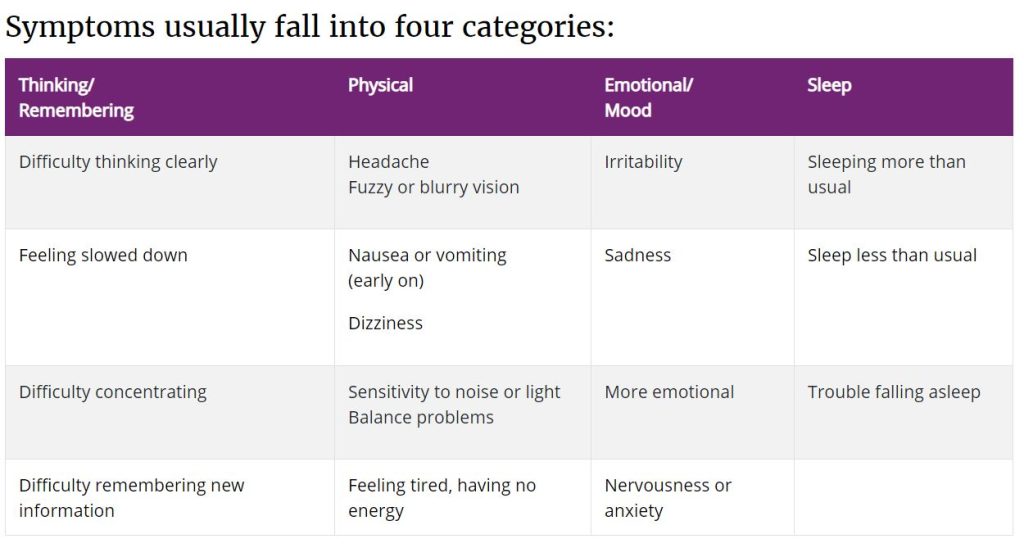
Concussion Symptoms. Courtesy CDC Website
You may observe some of these symptoms immediately after someone sustains a brain injury. Or symptoms may not emerge for several days. It’s also important to note that not everyone experiences the same symptoms.
Symptoms include difficulty thinking, concentrating or remembering or feeling slowed down.
Physical symptoms may include headaches, nausea, vomiting or fatigue. Some people are sensitive to noise or light. Others have trouble balancing themselves.
When someone suffers a head injury, it’s common for their sleep to be disrupted. They may sleep more or less than normal. Another sign is having trouble falling asleep. More extreme emotions are another symptom. The person may be irritable, sad, more emotional or exhibit high anxiety and nervousness.
Younger children may exhibit some of the above symptoms, but parents should also watch for crying inconsolably, more temper tantrums or getting easily upset and having trouble keeping up with skills they are learning (toilet training for instance). They may also lack interest in their normal activities.
Sports-Related Concussions and TBI in Massachusetts
Be aware of how concussions happen. After a car accident or truck accident, always receive immediate medical attention to make sure you have not suffered a TBI. When an elderly relative slips or a child falls on the playground, check in with the doctor. Do this anytime you observe someone suffer from any type of physical impact to the head.
When you sign your child up to play a sport, ask the coaches for the concussion protocol. In Massachusetts, middle and high schools are required to have documented procedures regarding concussion injuries and prevention. Passed in 2010, M.G.L. c.111 § 222 requires parents and students to participate in concussion awareness training so they can recognize symptoms and receive early treatment. The law also requires students to be removed from play if they may have suffered a concussion. They can only return with medical clearance.
Under the law, public middle and high schools and those subject to Massachusetts Interscholastic Athletic Association (MIAA) regulations must have concussion protocols. Other sports leagues are not required under Massachusetts law, but they should all have a concussion policy on their website.
Final Note
- At home, educate older children about TBI symptoms. Ask them questions when you sense something may be off and use the above chart to determine whether you may need to call the doctor.
- Ask for concussion safety protocols at schools and daycare centers, and when children participate in sports leagues. Attend concussion trainings.
- Watch younger children and older adults closely. Remember young children may not be able to communicate symptoms and pain with you and older adults may not recognize symptoms in themselves, especially if they have other medical conditions.
- Recruit as many family members as you can in watching for signs in young children, teens and the elderly.
- Visit some of the online resources below and share them with family members.
Concussion Prevention Resources for Families
Massachusetts Law on Concussion Prevention in Sports
105 CMR 201.00: Head injuries and concussions in extracurricular activities
Additional Resources
Heads Up to Brain Injury Awareness Training, CDC
Facts About Concussion and Brain Injury – Where to Get Help, CDC (a resource for all ages)
Sports Related Concussions and Head Injuries, Mass.gov
Concussion Trainings, Massachusetts Department of Public Health
Returning to School After a Concussion, Mass.gov
About Breakstone, White & Gluck – Boston Personal Injury Lawyers
With more than 100 years combined experience, Breakstone, White & Gluck of Boston is one of the most respected personal injury law firms in Massachusetts. Our attorneys represent individuals who have suffered traumatic brain injuries or mild traumatic brain injuries due to the negligence of another individual, organization or corporate entity.
If you have been injured, learn your legal rights for seeking financial compensation and obtaining medical care. For a free legal consultation, call Breakstone, White & Gluck at 800-379-1244 or 617-723-7676 or you can use our contact form.
Massachusetts Concussion Legislation Would Ban Students In Grade 7 or Younger from Playing Football
Should students have to wait until they finish 7th grade to play football in Massachusetts? Lawmakers are being asked to consider legislation to delay the start of play to protect players from concussions.
“An Act for No Organized Head Impacts to Schoolchildren,” has been filed by State representatives Paul A. Schmid III (D-8th Bristol) and Bradley H. Jones Jr. (R-20th Middlesex). The legislation would ban children in 7th grade or younger from playing or practicing any form of organized tackle football. Schools would be held accountable and face fines for violations:
- $2,000 for each violation
- $5,000 for subsequent violations
- $10,000 when serious physical harm result to participants
Children would be allowed to play flag football or any form of football which does not involve tackle play. The proposal does not include any other sport.
Causes of Concussions
The Centers for Disease Control and Prevention (CDC) define a traumatic brain injury (TBI) as a disruption to the brain caused by a blow or jolt to the head. Concussions are considered a mild TBI, which can result in a brief change of mental alertness or consciousness. A severe TBI can result in a longer period of unconsciousness or mental change.
Symptoms may not be immediately evident after a concussion, especially if the person or those around them are not familiar with the symptoms, which can include an inability to think clearly, memory problems, feeling dazed and mood, behavior or personality changes. Headaches, nausea and vomiting can also set in.
Beyond the sports field, falls are the leading cause of concussions, according to the CDC. Adults over age 65 and children under 14 are most likely to suffer a fall leading to a head injury. Car crashes are the third leading cause of concussions, followed by being struck in the head by an unspecified object, such as in a construction site accident or by violence.
Concussions can also happen on the sports field. Not every contact necessarily results in a concussion, but to identify injuries, Massachusetts and other states have already passed concussion education and training laws. Known as “return to play” laws, these require high school and middle school students to be examined by a medical professional before they can participate in sports again.
Research on Concussions and the Impact on Younger Football Players
New research shows there is a measurable impact when younger children play football. In a study of 26 football players – all age 12 – Wake Forest researchers found changes in the corpus callosum, which joins the two sides of the brain and integrates cognitive, motor and sensory functions. The players underwent MRIs to examine the changes prior to the three-month season and three months after the season concluded. They were compared to 22 other students who did not participate in contact sports.
Players who suffer a concussion need proper rest and treatment so they can properly heal and to reduce the chance for another injury. Researchers have documented this risk; one study found high school and college students who sustained concussions were four to six times more likely to suffer a second injury (Source: McGill University in Montreal).
Concussion Legislation Filed in Other States
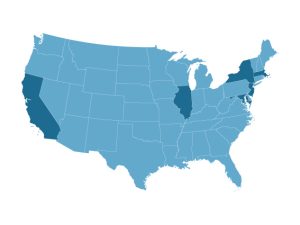
Lawmakers in Massachusetts and five other states have proposed banning tackle football for children younger than 12 or for those in seventh grade or younger. Data from Shape America.
Massachusetts isn’t taking the field alone on concussions. At least five other states are also debating tackle football bans for children under age 12. These states include Illinois, California, Maryland, New York and New Jersey, according to Boston.com. But none of the proposals are on track to reach state governors.
All 50 states already have “return to play” laws aimed at reducing youth sports-related concussions, according to the National Conference of State Legislatures. Washington state was the first to pass such a law in 2009. By 2015, every other state had enacted a similar law.
In most states, these laws mandate concussion awareness training and education to prevent concussions among student athletes. According to Shape America, 48 states require students suspected of having concussions to sit out at least 24 hours.
Arizona and South Carolina allow students back on the field the same day with a doctor’s approval.
Passed in July 2010, the Massachusetts concussion law requires parents, volunteers, coaches and school nurses to receive specialized concussion awareness training. This is to help them recognize concussion symptoms and help students receive treatment as soon as possible.
As in other states, the Massachusetts law requires medical clearance before students can return to sports. Schools are then required to maintain detailed record-keeping related to a student’s injury and progress in the classroom and on the field. The law is M.G.L. ch.111 §222. The Code of Massachusetts Regulations is 105 CMR 201.000.
All middle and high schools which offer sports through the Massachusetts Interscholastic Athletic Association (MIAA) must follow the concussion safety law.
Attitudes are Changing on Allowing Children to Play Football
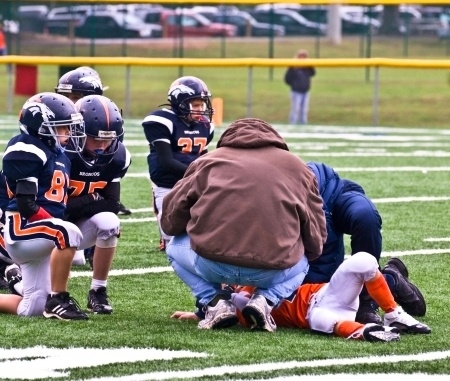 American attitudes about football are changing–even though the sport remains as popular as ever, more adults are re-thinking whether their children should risk head injuries by playing football.
American attitudes about football are changing–even though the sport remains as popular as ever, more adults are re-thinking whether their children should risk head injuries by playing football.
A new study by HBO Real Sports and Marist College Institute for Public Opinion surveyed more than 1,200 adults by phone in July and reports most have learned about the connection between concussions suffered while playing football and long-term brain injury. As a result, one in three adults say they would be less likely to allow their own son to play if given the choice.
Ultimately, 85 percent would let their son play, another 13 percent would not and 2 percent are unsure (The study did not report on how respondents would feel about letting their daughters play).
Seven out of 10 Americans think the benefits of playing outweigh the risk for injury. Also, 74 percent of Americans think football is a good way to build character and boys should be encouraged to play.
One notable point is Americans seem to be placing trust in coaches, parents and even players themselves. Some 30 percent say they are less concerned about the risk of long-term brain injury because these individuals are more informed now and can take greater precautions.
Concussion Prevention for Student Athletes
The majority of states have passed concussion prevention laws for high school athletes. Massachusetts passed a law in 2010, which requires students, parents and coaches to receive annual training on recognizing and treating concussions. Student athletes who are suspected of having suffered a concussion must be removed from play and receive a doctor’s medical clearance before returning. Schools must also report concussions to the state Department of Public Health. The law covers high school and middle school athletes in football, soccer and all other sports.
Today, 49 states have concussion prevention laws. The only exception is Mississippi. Washington was the first state to pass such legislation. In May 2009, the state passed the “Lystedt Law,” named after 13-year-old Zackery Lystedt suffered permanent brain injury in 2006 while playing in a junior high school football game after suffering a concussion.
NFL Settlement
In August, after the survey was conducted, the National Football League (NFL) agreed to settle a class-action lawsuit brought by more than 4,500 players and their families.
The settlement, the result of court-ordered mediation, includes $5 million for men with Alzheimer’s disease, $4 million for those diagnosed after death with a brain condition called chronic traumatic encephalopathy and $3 million for players with dementia. The suit alleged the league concealed what it knew about concussions among its players and failed to protect them from repeated hits in the game. Plaintiffs included Hall of Famer Tony Dorsett, Jim McMahon and the family of former New England Patriots’ start Junior Seau, who committed suicide in 2012.
Youth Football Enrollment Still Increasing
Pop Warner is the nation’s largest youth football league, serving over 250,000 children between the ages of 5 and 15. In recent years, the league has implemented its own safety rules. One rule limits the amount of contact players have to one third of practice time. Another is “when in doubt, sit it out,” when a concussion is suspected.
But enrollment has not decreased as public awareness has grown about concussions and football, officials recently told CNN. Enrollment has increased one percent annually for the past ten years, through 2012.
Related:
Youth Football Takes Hard Hit… One-Third of Americans Less Likely to Allow Son To Play Football because of Head Injury Risk, HBO Real Sports/Marist Poll.
Read More
Brain Injury and Concussion Warning for College Athletes
 A Boston sports research organization says college athletes should be provided more information about the long-term consequences of concussions and brain trauma.
A Boston sports research organization says college athletes should be provided more information about the long-term consequences of concussions and brain trauma.
Researchers from the Sports Legacy Institute say the National Collegiate Athletic Association (NCAA) is distributing educational materials which make no mention of the risk of chronic traumatic encephalopathy (CTE) or the symptoms associated with the degenerative brain disease, which has been linked to repeated head injuries.
The Sports Legacy Institute’s recommendation comes as the NCAA medical advisory committee plans to meet this week. The Boston sports organization advocates for awareness and education on concussions as well as proper diagnosis and management.
CTE is a neurodegenerative disease believed to be caused by repeated trauma to the brain, such as concussions or blows to the head. It can only be definitely diagnosed through post-mortem analysis of the brain tissue after death.
In 2010, the National Football League (NFL) began warning players about the potential long-term risks of repeated brain injuries. These include depression, memory problems and early dementia.
The link between the NFL and brain damage in players was identified in 2002, when an autopsy was conducted on former Steelers center Mike Webster. The player, who suffered a heart attack at age 50, had brain trauma that appeared related to his 17-year football career.
The NFL initially claimed there was no link between football and long-term brain damage, but has since acknowledged one. Hundreds of players began filing lawsuits against the league. In early June, the more than 80 pending lawsuits representing 2,000 players were consolidated into a lawsuit filed in federal court in Philadelphia.
The consolidated lawsuit alleges the NFL failed to acknowledge and address neurological risks associated with the sport and then failed to tell players about the risks they faced.
Just this week, national youth sports organization Pop Warner implemented rules to prevent concussions, including limiting the amount of contact drills, one-on-one blocking, tacking and scrimmaging to no more than a third of the total weekly practice time. The second rule change prohibits full-speed head-on blocking or tackling with players more than 3 yards apart.
Related:
- The Sports Legacy Institute
- College Athletes Should Be Warned About Long-Term Risk From Brain Trauma, Researchers Say, The Boston Globe
- Pop Warner Changes Practice Rules for Safety, CNN
- 2,000 Players Unite in Suing NFL Over Head Injuries, CNN


